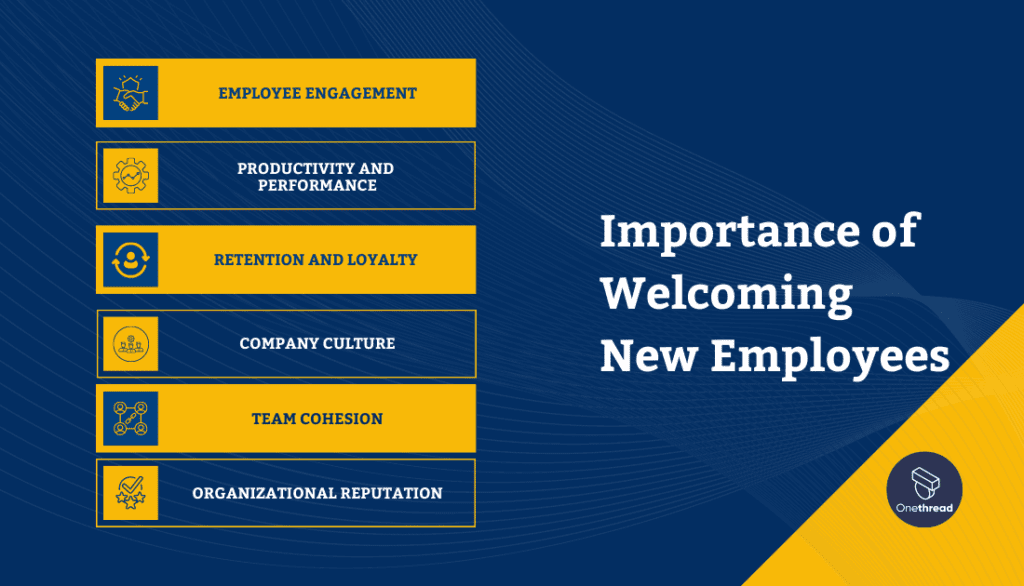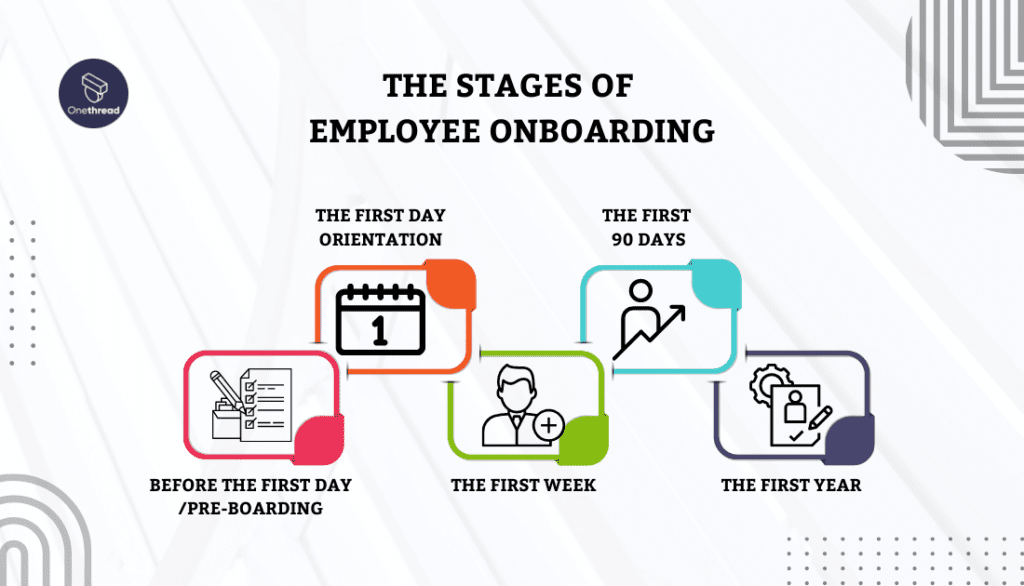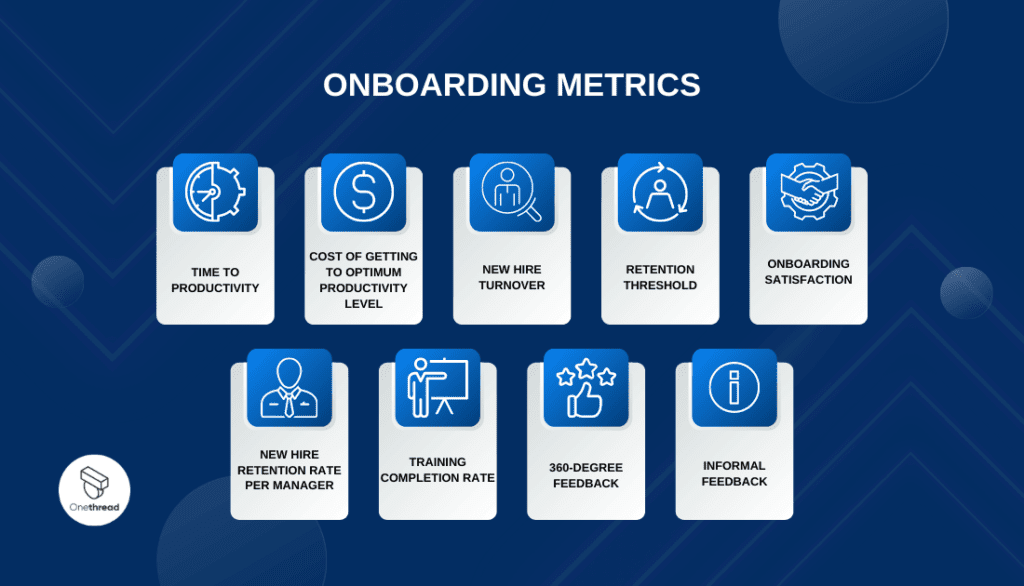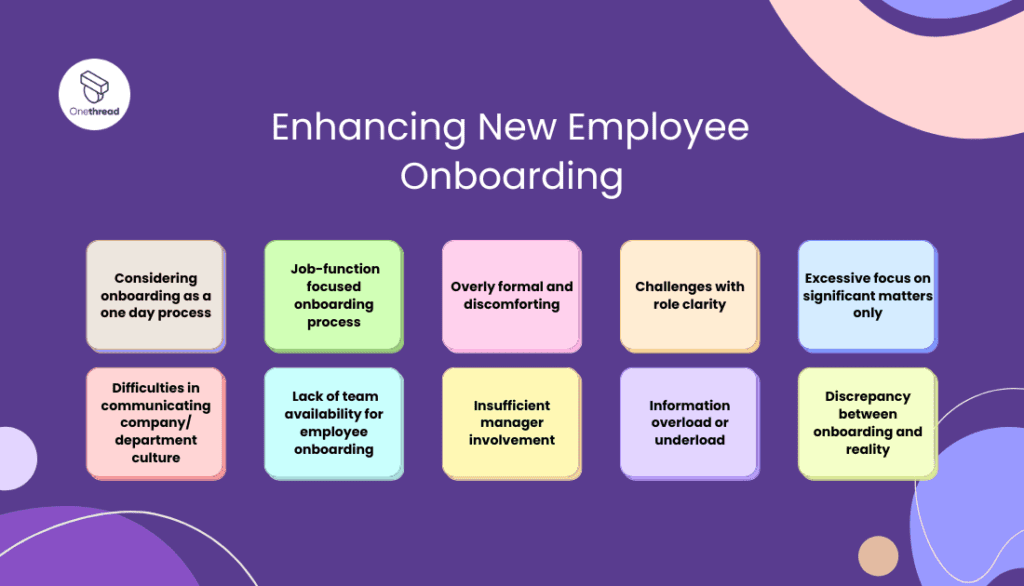Are you looking for engaging and fun ways to introduce new team members? Well, look no further! In this article, we will explore various creative methods that can help break the ice and make your new team members feel welcomed and included from day one.
Firstly, consider incorporating icebreaker games and activities into the introduction process. These can range from simple name games to more interactive exercises that encourage teamwork and collaboration. By getting everyone involved in a lighthearted activity, you create an atmosphere of camaraderie that helps a new team member feel at ease.
Additionally, personalized welcome messages or videos are a great way to show your appreciation and make new team members feel special. This personal touch goes a long way in making them feel valued and excited about joining the team. So why wait? Let’s dive into these fun ways to introduce new team members!
Why It Is Important To Welcome New Employees Properly To The Team

Properly welcoming new employees to the team is of utmost importance for fostering a positive and productive work environment. It sets the tone for the entire employee experience and greatly influences their commitment and engagement. Here are the key reasons why a well-executed onboarding process is crucial:
- Employee Engagement: A warm and welcoming onboarding experience helps new hires feel valued and appreciated, increasing their sense of belonging and commitment to the organization. Companies often enhance this experience using tools like an LMS for onboarding, which ensures consistency and accessibility in training.
- Productivity and Performance: Effective onboarding ensures that new employees quickly understand their roles and responsibilities, enabling them to contribute productively from the start.
- Retention and Loyalty: When employees are welcomed and supported, the likelihood of their staying long-term with the company increases, which results in turnover reduction and talent retention.
- Company Culture: Proper onboarding helps new hires understand the company’s values, culture, and goals, aligning them with the organization’s vision.
- Team Cohesion: A well-integrated new employee strengthens team dynamics and fosters positive relationships among colleagues.
- Organizational Reputation: A positive onboarding experience enhances the company’s reputation as an employer of choice, attracting top talent in the future.
The Stages of Employee Onboarding
Employee onboarding typically consists of several stages that guide new hires from their first day to becoming fully integrated members of the team. These stages include:
- Preparation and Welcome: Before the new employee’s first day, HR and managers prepare for their arrival, ensuring their workspace is ready and introducing them to the team via email.
- Orientation and Introduction: On the first day, the new hire receives an orientation, learning about the company’s policies, culture, and essential information. They are introduced to their colleagues and team members.
- Role Clarity: The onboarding process includes clearly defining the employee’s role, responsibilities, and performance expectations to avoid confusion.
- Skill Development: Training and development opportunities, a key part of a comprehensive employee benefits program, are provided to equip the new employee with the necessary skills and knowledge to excel in their role.
- Social Integration: Building relationships is crucial during onboarding. Team-building activities and social events help new hires bond with their colleagues.
- Continuous Support and Feedback: Managers and HR regularly check in with the new employee to provide ongoing support, address concerns, and offer feedback.
- Full Integration: As the onboarding process progresses, the new hire becomes fully integrated into the team and the company culture, ready to make a meaningful contribution.
By following a well-structured onboarding process, organizations can ensure that new employees transition smoothly into their roles, feel welcomed and supported, and become valuable assets to the team and the company as a whole.




How To Welcome New Employees – Fun Ways To Introduce New Team Members




There are so many fun ways to welcome new employees. Here are a few ideas you can use as inspiration.
1. Promoting Company Culture: Starting Deliberate Conversations
In every organization, defining core values and company culture is crucial. If your organization has not yet done so, it is imperative to establish them. While managers excel at communicating practical topics such as policies, tasks, and procedures.
They often struggle to bring the more abstract concepts of culture, vision, mission, and values to life. These intangible aspects of the organization need to be addressed and discussed openly.
Embracing a Transparent Approach
To bridge the gap between values and actions, it is vital to initiate deliberate conversations about your company culture. Start by explaining to new hires how their department contributes to the organization’s mission statement.
Highlight the department’s role in shaping the desired customer experience. Encourage new employees to share their thoughts on how they envision their roles aligning with the company’s culture, mission, and values. Foster an open environment that welcomes input and feedback.
Regular Discussions for Continuous Alignment
To ensure ongoing alignment, it is essential to encourage and facilitate these conversations on a regular basis. Consider incorporating them into team-wide meetings, whether they occur weekly or monthly.
These discussions will help employees understand the company’s culture better and allow them to actively contribute to its development. By fostering an environment of open dialogue, you can establish a stronger connection between employees and the organization’s values, ultimately leading to a more cohesive and aligned workforce.
2. Fun and Engaging Onboarding: Introducing New Hires to the Team and Office




As a Hiring Manager or department manager, it is essential to allocate dedicated time to introduce new hires to the team. Despite a busy schedule, making this effort is crucial.
There are various creative ways to achieve this, such as incorporating scavenger hunt activities or scheduling their start date to coincide with team-wide meetings. Taking these steps is important to ensure that new hires are properly acquainted with their colleagues, departments, and office layout.
Scavenger Hunts for Team Collaboration and Software Familiarity
At Onethread, we organize scavenger hunts using our software itself. By providing clues that can be found within individual profiles or hidden in discussions, tasks, or notes, we not only foster team collaboration but also help new hires become familiar with the communication tools we utilize.
This approach allows us to achieve two objectives simultaneously: emphasizing the value of teamwork in the workplace and promoting software proficiency among employees.
Plus, integrating an online business card maker could be a creative addition. By incorporating a task where new hires create their digital business cards using the tool, you could further engage them and provide a fun, practical introduction to personal branding and networking within the company. This fits seamlessly into the scavenger hunt activity, adding a modern, digital layer to the onboarding experience.
Buddy System for Office Orientation
To facilitate familiarity with the office layout, assigning a buddy to new hires for the day can be highly effective. The buddy can assist with inquiries such as parking locations, coffee stations, restroom facilities, conference rooms, and any other spaces the new hire needs to know about.
This personalized approach helps new employees navigate the physical aspects of the workplace while fostering a sense of support and camaraderie.
3. Fostering Realistic Role Understanding: Guiding New Hires to Success
While orientation programs traditionally involve a thorough review of job descriptions, relying solely on a list of tasks and responsibilities may not provide new employees with a comprehensive understanding of their role in the organization.
While onboarding should include orientation programs, it is crucial to direct new hires towards a realistic understanding of their position. By doing so, employees will not only gain confidence but also adapt quickly to their new roles.




Setting Objectives and Milestones
In addition to covering factual information such as compensation, benefits, company procedures, and paperwork, onboarding should now focus on establishing milestones and goals for new employees. As a Hiring Manager, it is essential to design an orientation program with clear objectives.
Outline the specific skills and competencies required for the role and provide examples of how new employees can achieve these goals. The 30-60-90 approach to set clear expectations and success criteria has been growing popular for the right reasons. Additionally, consider implementing methods to measure the outcomes of their progress.
The Benefits of a Structured Approach
A well-structured and thoughtfully planned onboarding process that clearly communicates the objectives and goals of the new employee’s role can yield numerous benefits. This approach increases employee engagement, improves performance, and even reduces turnover rates.
As an experiment, we implemented this approach for almost a month and found that team members who received a clear outline of expectations and strategies were over 100% productive two months earlier than those who did not.
Consequently, we have adopted this as a standard practice, communicating key skills and goals from the very first day of onboarding.
4. Personalized Welcome Messages or Videos




Upon joining our team, we go the extra mile to make new hires feel special and appreciated by sending them a warm and personalized welcome message or video. This personalized approach has several benefits:
create AI video messages to streamline the onboarding process, ensuring each new team member feels valued and engaged right from the start.
Creating a sense of belonging
Receiving a personalized welcome message or video instantly makes new hires feel included and part of the team. It helps them establish a sense of belonging even before their first day in the office.
Demonstrating attention to detail
Taking the time to create customized welcome messages or videos shows that we genuinely care about each individual on our team. It conveys our commitment to ensuring a smooth transition and emphasizes the value we place on their presence.
Setting a positive tone
Starting with a personalized welcome message or video sets a positive tone for new hires’ journey with us. It generates excitement, anticipation, and enthusiasm, showcasing our organization’s commitment to valuing employees’ unique qualities.
Sparking connections with colleagues
Sharing the welcome message or video with existing team members allows them to get to know new hires even before meeting in person. This encourages conversations, establishes common interests, and fosters connections from day one, facilitating seamless integration into the team.
5. Team Lunch or Welcome Breakfast




To further facilitate integration and relationship building, we kick off new hires’ journey with us by organizing a team lunch or welcome breakfast. Here’s why this shared meal is an essential part of the onboarding process:
- Getting to know colleagues: Sharing a meal provides an excellent opportunity to interact with new colleagues in a relaxed setting. It allows for introductions, sharing stories, discovering common interests, and building connections.
- Creating a welcoming atmosphere: The team lunch or welcome breakfast sets a friendly and welcoming tone from the start. It fosters a positive and inclusive atmosphere that encourages open communication and collaboration.
- Comfort and inclusion: Existing team members play a role in making new hires feel comfortable and included by sharing their own experiences and insights about working together. This further strengthens bonds and helps new employees acclimate to the team dynamics.
6. Team-Building Exercises or Challenges




Engaging in team-building exercises or challenges is an integral part of our onboarding process. These activities serve multiple purposes:
- Strengthening bonds and communication: Team-building exercises provide an opportunity for new hires to interact with their colleagues on a personal level. This strengthens bonds, enhances communication skills, and fosters collaboration within the team.
- Integration into the team dynamics: By participating in these activities, new hires quickly become familiar with their colleagues and the team dynamics. They gain insights into everyone’s strengths and weaknesses, leading to a more harmonious work environment.
- Discovering unique contributions: Team-building exercises allow individuals to showcase their unique skills and perspectives, contributing to problem-solving and fostering a sense of unity within the team.
Enhancing New Employee Onboarding: Creating an Unforgettable Experience




The traditional onboarding processes often suffer from various shortcomings, leading to a less effective and engaging experience for new employees. The following problems are commonly observed:
1. Considering onboarding as a one day process: Onboarding is often treated as a brief, one-time event, failing to provide adequate time for new employees to acclimate and fully understand their roles.
2. Job-function focused onboarding process: The onboarding process tends to overly emphasize job-specific tasks, neglecting the broader context and interconnectedness of different departments within the organization.
3. Overly formal and discomforting: The formal nature of onboarding can create an unwelcoming atmosphere, making it difficult for new employees to feel comfortable and integrated into the company culture.
4. Challenges with role clarity: New employees may face difficulties in gaining a clear understanding of their roles, responsibilities, and expectations within the organization.
5. Excessive focus on significant matters only: Onboarding processes often concentrate solely on critical aspects, neglecting smaller but essential details that contribute to a holistic understanding of the company.
6. Difficulties in communicating company/department culture: The onboarding process may fail to effectively convey the company and departmental culture, leading to a lack of alignment and potential clashes in values and practices.
7. Lack of team availability for employee onboarding: Limited time and availability of existing team members make it challenging to provide adequate support and guidance during the onboarding process.
8. Insufficient manager involvement: Managers may not allocate enough time and attention to onboarded employees, hindering their integration and potential growth within the organization.
9. Information overload or underload: Onboarding processes can overwhelm new employees with an excessive amount of information or provide inadequate information, leading to confusion and ineffective assimilation.
10. Discrepancy between onboarding and reality: The onboarding experience often fails to accurately reflect the day-to-day realities and challenges of the employee’s role and the organization as a whole.
Frequently Asked Questions
What Are Some Examples Of Icebreaker Games And Activities That Can Be Used To Introduce New Team Members?
Some examples of icebreaker games and activities that can be used to introduce new team members include two truths and a lie, scavenger hunts, and name games. These activities help foster connections and break the ice.
How Can Personalized Welcome Messages Or Videos Be An Effective Way To Make New Team Members Feel Welcomed?
Personalized welcome messages or videos can be effective in making new team members feel welcomed because they show that you took the time to personalize their experience. It creates a sense of belonging and makes them feel valued from the start.
What Are Some Team-Building Exercises Or Challenges That Can Help New Members Integrate Into The Team?
Team-building exercises like icebreaker games, group projects, or team challenges can help new members integrate into the team. These activities foster communication, collaboration, and trust among team members, creating a positive and inclusive work environment.
How Can An Office Scavenger Hunt Be A Fun And Interactive Way To Introduce New Team Members To The Office Environment?
An office scavenger hunt can be a fun and interactive way for new team members to explore the office environment. They can solve clues, interact with colleagues, and learn about different areas of the office while having a great time.
What Are Some Creative Ideas For A Welcome Kit Or Gift That Can Be Given To New Team Members To Make Them Feel Valued And Appreciated?
Create a personalized welcome kit for new team members. Include items like company swag, a handwritten note from the team, and a gift card to their favorite coffee shop. It shows them they are valued and appreciated.
Conclusion
Introducing new team members can be a fun and exciting process. There are plenty of creative fun ways to introduce new team members that can make the process enjoyable for everyone involved.
By incorporating these ideas into your onboarding process, you can set the stage for strong relationships, collaboration, and success within your team. So go ahead and try out some of these fun approaches – your new team members will appreciate it!
